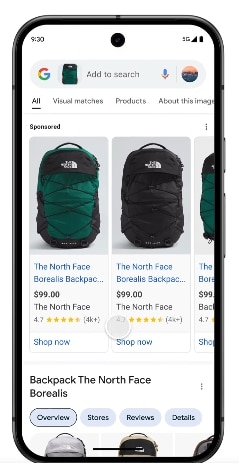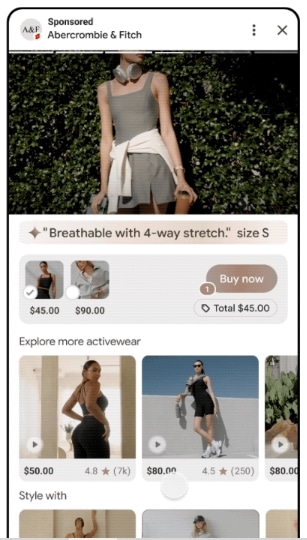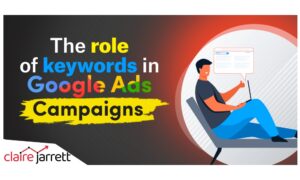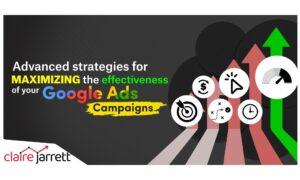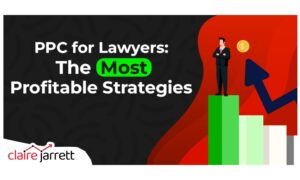What’s New in Google Ads in 2025?
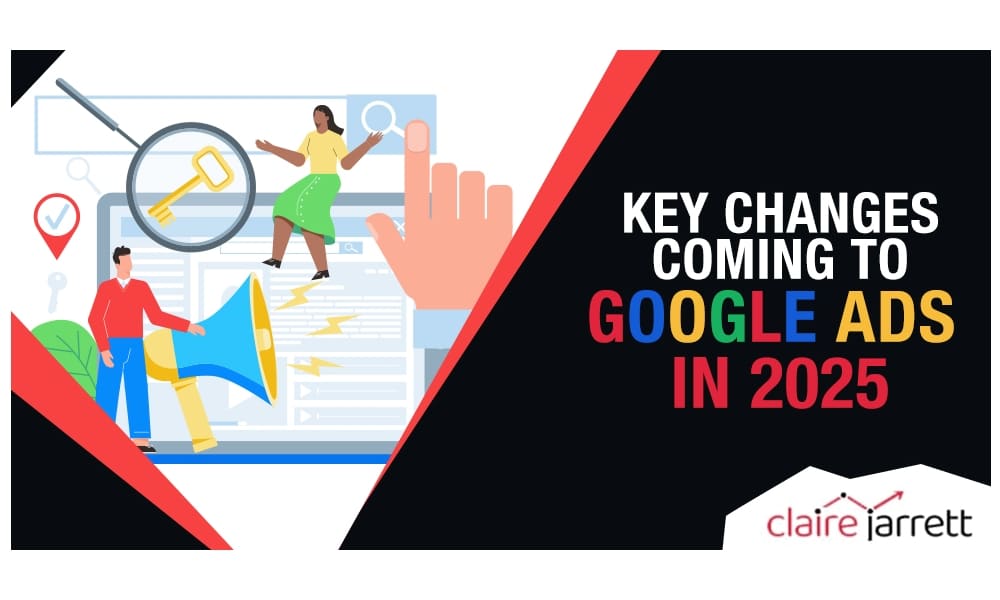
Last Updated on: 16th May 2025, 01:24 pm
Our favourite search engine has been changing rapidly. To make the upcoming year easier for advertisers, I sat down to outline the key changes coming to Google Ads in 2025. I’ll also provide advice on how to best adapt to them, so you can get even better results in the upcoming year!
Let’s dive in!
Key changes coming to Google Ads in 2025:
- Showing Search and Shopping Ads in AI Overviews
- AR-assisted shopping and new features for virtual try-ons, shopping with Google Lens, and using videos
- Additional AI features in the campaign and creative generation processes
- Sunsetting Video Action Campaigns (and replacing them with Demand Gen)
- Better reporting and insights for Performance Max Campaigns
- Lifecycle goals (retention, acquisition) in Google Ads bidding
- Data privacy updates and changes to the advanced consent mode
1. Search and Shopping Google Ads in AI Search Overviews in 2025
With users increasingly typing in complex queries for Google to solve and the AI race nowhere near the finish line, Google’s CEO, Sundar Pichai, announced that profound changes are coming to search.
“In a world in which you’re flooded with like lot of content …if anything, something like search becomes more valuable. (…) I think the problem with a lot of those constructs is they are zero-sum in their inherent outlook. They just feel like people are consuming information in a certain limited way and people are all dividing that up. But that’s not the reality.”
In short: Search isn’t going away, and neither are our ads. But they will change.
Google has been experimenting with placing Search and Shopping Ads before and after the AI Overview content since May 2024. However, in 2025, Google Ads plans to start introducing your ads within the content itself (provided they generate value).
In the example below, users curious about getting wrinkles out of their clothing might see an ad for products that unwrinkle clothes.
Your ad doesn’t have to meet certain eligibility criteria to be placed in AI Overviews (not that we know of yet, anyway) – however, from my 17+ years of advertising experience: make sure your Quality Score is high and that you speak to the specific problems of your target audience within your ad copy and landing pages.
Since the goal is to match the searcher’s intent, the more specific you are, the higher the chances your ads will appear in the Overview!
2. AR-Assisted Shopping as One of the Key Google Ads Changes in 2025
Remember those futuristic movies that had programs allowing you to try on clothes on your virtual model before clicking through to buy them? Well, that’s where Google wants to go with Shopping Ads in 2025.
Plus, see something you like? It’s now easier than ever to buy it!
Key Google Ads Change in 2025: Virtual Reality for Shopping Ads
For now, Google Ads is limiting the VTO (virtual try-on) change to apparel, but you can bet they’ll expand the Shopping Ads’ ability to offer virtual try-ons in 2025!
In the example above, you can easily test these tops based on different sizes. As an advertiser, you’re automatically opted in if you sell the eligible products, but you can make the most of Shopping Ads’ VTO by:
- Adding high-resolution product images (at least 512 x 512px, but preferably 1024 pixels or higher)
- Adding an image that shows the product on a front-facing model (or mannequin), or the product lying flat
- Only showcasing the product without anything obstructing the complete view (e.g., accessories, bags, etc.)
This change is currently rolling out across standard Shopping Ads and Performance Max campaigns. However, it may not be available to you yet (tests usually first roll out in the US) – so keep an eye out!
Shopping Ads in Lens
Tap to buy? That’s where Google Ads seem to be going in 2025!
If you run AI-powered Search, Shopping, or Performance Max campaigns, you’ll be eligible to appear with your sponsored results whenever searchers use Google Lens to look for products like yours.
Personally, I find this to be an excellent placement! Like with any advertising placements that appear in the right context, it has the potential to connect you with people when they’re ready to buy.
However, it is a new feature, so let’s keep an eye on it!
Bonus: Adding Videos to Your Search Ads
The third change that helps shop through Google is definitely the addition of product video ads in Search placements.
You can use your own videos or influencer-generated ones to make shoppers engage with the ad more and get styling suggestions or recommendations.
Unfortunately, the majority of these are targeted at clothing and similar product categories. I, for one, am looking forward to native features for other product categories. Let’s see what Google prepares for us!
3. More AI Help Coming to Campaign Generation and Creatives
Google is vocal about expanding the use of its AI models when it comes to structuring campaigns and generating creatives.
The conversational campaign generation experience, where you work with Google’s AI to set up a good campaign, is expanding into more languages (including English, Spanish, French, and German).
Google is also doubling down on the asset enhancement feature, first for responsive display ads where it auto-crops your images, highlights focal points, and makes a plethora of other small additions.
Finally, you could previously only use these AI-assisted features in Performance Max campaigns, but now they’re coming to other campaign types, too.
As Google’s Ads Product Liaison, Ginny Marvin, explained:
“Image asset generation is available in Performance Max, Demand Gen, Display, and App campaigns. It is now powered by Imagen 3, Google’s latest text-to-image model that generates crisper, more lifelike images for your ads.”
My take? Be careful. AI-assisted features can be very helpful, but give them a sanity check before you apply them to your live campaigns.
4. The Sunset of Video Action Campaigns in 2025 Google Ads (and Their Replacement)
Starting from Q2 2025, you’ll no longer be able to create YouTube Video Action Campaigns (VAC) in your Google Ads account.
However, if you keep any existing ones in your account, they’ll be auto-transitioned to Demand Gen campaigns.
Video Action Campaigns vs Demand Gen: What Are the Key Differences Coming to Google Ads in 2025?
In terms of features, here’s what you can expect from Demand Gen:
| Google Ads Video Action Campaigns vs Demand Gen campaigns | ||
|---|---|---|
| Video Action Campaigns | Demand Gen campaigns | |
| Ad formats | In-stream, in-feed, Shorts video | In-stream, in-feed, Shorts video, +In-feed image, +Shorts image |
| Placements | YouTube, Google video partners | YouTube, Google video partners (with opt-out), +Discover, +Gmail |
| Format | Video ads | Video ads, +Image ads, +Carousel ads |
| Audience | Custom segments, Your data, Interest, Demographics, Optimised targeting, *Removing: Combined audiences, Seasonal events, and New customer acquisition | Custom segments, Your data, Interest, Demographics, Optimised targeting, +Lookalike segments |
| Bidding | Maximise conversions, Target CPA, Maximise conversion value, Target ROAS, Omnichannel Bidding, *Removing: Bid Modifiers | Maximise conversions, Target CPA, Maximise conversion value, Target ROAS, +Maximise clicks, +Omnichannel Bidding (in 2025) |
| Measurements | DDA, Conversion Lift, Brand Lift, Search Lift, Third-party measurement | DDA, Conversion Lift, Brand Lift, Search Lift, Third-party measurement |
| Workflows & reporting | Legacy UI (removed), frequency caps (removed), shared budgets (removed), Video Frequency Groups (alpha) | Creative Preferences, Ads preview, Segment by ad format reporting, Draft campaigns, Location and language at the ad group level, Video Frequency Groups (alpha) as an alternative to frequency caps |
| Ad extensions | Product feeds, Call to action extension, Sitelinks, *Removing: Lead Form Ads (beta) and Affiliate Location Assets (beta) | Product feeds, Call to action extension, Sitelinks |
Ultimately, Google wants to get the creative assets and budget caps from you, with free rein over other aspects such as placements in order to place your products in front of the right people.
Hopefully, the technology will be there in a few years – but the time isn’t right yet.
Keep a close eye on the migration!
5. More Transparency in Your Performance Max Campaigns
When it first rolled out, Performance Max didn’t allow for any negative keyword tweaking, you could barely see which assets performed better, and, well, you can imagine how put off I felt by that.
Thankfully, the situation is getting better. Performance Max is constantly being updated with new transparency features, a trend that’s expected to continue in 2025.
For example, recently we’ve gotten the ability to:
- Set campaign-level negative keywords
- Exclude device placements and add up to 50 search themes
- Choose account-level placement exclusions
- Have Ad Rank determine which campaign will be served when you advertise similar products through both pMax and Shopping Ads to prevent cannibalisation
In terms of reporting, we can also see asset-level conversion (AKA: which assets generated the most/best conversions?), impression share, demographics, and other insights.
Still, my advice to you – if you’re a new advertiser – is to start off with a traditional campaign to see what does (not) work, and then use Performance Max to scale it. As with any algorithm-driven campaign, Google will be applying the general best practices, not your business’s best practices.
You can outsource campaign management to an algorithm, but not the rationale behind it that only an experienced human can provide!
6. New Bidding Option Changes to Google Ads in 2025
Value-based bidding is all the rage at Google Ads headquarters this year and for good reason. Customer journeys are complex, and now we no longer think of them in terms of funnels, but touchpoints.
This means that it’s not so easy to attribute conversions to a single channel anymore, and, often, there’ll be many interactions between your ideal lead and your brand before an ad (or a different content piece) results in a conversion.
To tackle that, Google Ads is focusing on the following in 2025:
New Options in Google Ads Lifecycle Goals
In November 2024, Google Ads added custom experiments to pMax and Search campaigns.
The goal? Testing new customer acquisition to find the optimal approach.
On the other hand, there’s been a focus on retention. The retention goal itself is now available for testing in pMax, and you can use it to win back churned customers.
Gross Profit Goal in Google Ads
You know how vocal I am about mapping bids to the actual returns you get from them. I’m not the only one.
We’re going to see improved tests on the new gross profit goal (currently in beta for pMax and Shopping campaigns).
7. Data Privacy Updates on Google Ads in 2025
Finally, I can’t finish this article without mentioning what’s coming in terms of understanding who is clicking on your ads.
This year, we’ve seen the new Google Ads Data Manager, and in 2025, we’re going to see more changes to Customer Match – particularly confidential matching.
Confidential matching secures and anonymises your first-party data, which I normally use for retargeting or warm-up campaigns. There’s also a plan to start using it for enhanced conversions.
You’ll also need to start using the two new parameters in the advanced consent mode, which is where I recommend working with a certified Google Partner.
2025 Google Ads in a Nutshell: AI, Privacy, Shopping
All the changes I showed you in this overview point to the same three factors: AI, privacy, and shopping. It’s no secret that consumers want personalised experiences, but they don’t want to sacrifice their data in order to get them.
With AI, Google Ads is making a big bet on providing fresh and exciting shopping experiences without requiring advertisers to spend millions of dollars.
My advice to you is to test out the new features as soon as possible. The sooner you adapt, the easier it will be to optimise – and that’s what will give you the best competitive advantage in 2025!
Of course, remember the foundations – or remind yourself with my best-selling Google Ads book. And if you’re wondering how you can make your campaigns generate more revenue, contact me for personalised advice.



